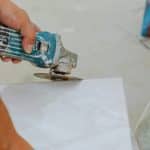Birds, especially parrots, are known for their vibrant colors, impressive intelligence, and playful energy. However, they may sometimes exhibit unwanted behaviors such as biting. Whether you are a new bird owner or an experienced aviculturist, it’s crucial to train your parrot effectively to prevent this behavior. This article focuses on the most efficient ways to teach your feathered friend not to bite.
Learn to Understand Your Parrot’s Body Language
The first step in preventing your parrot from biting is understanding its body language. Birds communicate mainly through behaviors and physical cues. When a bird is uncomfortable or scared, it will display certain signs such as puffing up its feathers, eye pinning, or growling. Learning to interpret these messages can help you anticipate a bite and intervene before it occurs.
Cela peut vous intéresser : How to Care for a Dog’s Skin and Coat During Harsh Winter Months?
Consider spending quality time with your bird to familiarize yourself with its typical behavior. This will make it easier to notice when something seems off and possibly prevent an unwelcoming bite. Remember, the key here is patience. It will take time and consistent effort to understand your parrot’s unique language.
Utilize Positive Reinforcement Training
Positive reinforcement is a highly effective method to mold your parrot’s behavior. This type of training involves rewarding your bird when it exhibits desirable behavior, thus encouraging it to repeat the action in the future.
A lire également : How to Choose the Right Type of Heated Bed for Arthritic Senior Cats?
Let’s say you want your parrot to stop biting your hand when you try to take it out of the cage. Initially, start by rewarding your bird every time it steps onto your hand without biting. You can use a favorite treat as a reward or even verbal praise can work as an effective reinforcement.
But remember, timing is crucial here. The reward should be given immediately after the desired behavior, or else your parrot might not make the connection.
Teach Your Parrot ‘Step Up’ and ‘Step Down’ Commands
Teaching your parrot basic commands like "Step Up" and "Step Down" can prove very beneficial in curbing biting behavior. These commands are essentially asking your parrot to climb onto or off your hand.
Start by presenting your hand to your bird and saying "Step Up". If your parrot complies, reward it with a treat. If it tries to bite, remove your hand and try again after a while. The same principle applies to the "Step Down" command.
With time and consistent training, your bird will understand these instructions and will associate compliance with rewards. This step-by-step approach is a non-threatening way to interact with your bird.
Avoid Punishment and Negative Reinforcement
While it might be tempting to scold or punish your parrot when it bites, negative reinforcement is not an effective strategy and can often reinforce the unwanted behavior. Birds, including parrots, do not understand punishment the way humans do. Instead of discouraging the biting, the bird might interpret this as a form of attention, encouraging it to continue the behavior.
Instead of resorting to punishment, aim to reinforce the positive behaviors and ignore the negative ones. This sends a clear message to your bird about what is acceptable and what isn’t. So, the next time your parrot bites, try to remain calm and avoid reacting. Over time, your bird will understand that biting does not yield any positive outcomes.
Maintain a Healthy Environment for Your Parrot
Last but not least, ensuring a healthy and balanced environment for your parrot is crucial in managing their behavior. A parrot’s cage should be clean, spacious and enriched with toys and perches to keep them entertained. A bored or stressed bird is more likely to resort to biting.
Furthermore, a balanced diet plays a crucial role in a parrot’s behavior. A parrot that lacks certain nutrients may become irritable or aggressive. Therefore, it’s important to provide a varied diet full of fruits, vegetables, and high-quality bird pellets.
Remember, a happy parrot is less likely to exhibit aggressive behavior. Your bird’s behavior is a reflection of its wellbeing, and by ensuring its physical and emotional needs are met, you are likely to see a decrease in biting and other unwanted behaviors.
Implement Clicker Training Techniques
Another effective method for training your parrot not to bite is through the use of clicker training techniques. This method, widely used in pet training, involves the use of a small device that makes a distinct "click" sound when pressed. The "click" serves as a marker, letting the bird know that it has done something right and that a reward is coming, forming a positive association.
To start off with clicker training, you need to create a bond between the clicker sound and a reward, usually a favored treat. This is achieved through a process known as ‘charging the clicker.’ For this, click the device and immediately give your parrot a treat. Repeat this several times until your bird starts to associate the click with a reward.
Once this association is established, you can begin to use the clicker for behavior modification. For instance, if your bird steps onto your hand without biting, immediately click the clicker and give a treat. The parrot will gradually understand that not biting leads to a click and a subsequent reward, thereby reducing its biting behavior. Remember, timing is crucial in clicker training. The click and reward need to occur promptly after the desired behavior for the parrot to make the connection.
Use Bird Collars for Serious Cases
If the biting problem persists despite all your efforts, you may have to resort to using a bird collar. Bird collars are specially designed to prevent birds from injuring themselves or others. It’s a good idea to try more gentle methods first, such as body language reading and positive reinforcement. However, if your bird’s aggression continues to pose a threat, a collar could provide a temporary solution.
Before proceeding with this option, it’s recommended to consult with an avian vet. They can guide you on how to use the collar correctly and safely. Remember, bird collars should never be used as a long-term solution. They are to be used alongside other training methods until the biting behavior is under control.
Conclusion
Parrots are intelligent creatures that require time and patience to understand and train. Each bird has a unique personality and will communicate its comfort and discomfort through body language. The message threads they use to communicate their feelings can be complex, but once you understand them, it will be easier to prevent bird bites.
Methods such as positive reinforcement, clicker training, teaching your parrot to step onto your hand, and maintaining a friendly environment in the bird cage can be effective in teaching your pet bird a bite-free life. However, it’s essential to remember that these methods require consistency and patience. In extreme cases, a bird collar can be used, but only under professional guidance and as a temporary measure.
Ultimately, the foundation of any training process lies in building a strong bond with your parrot. A comfortable, trusting parrot would be less likely to resort to biting as a method of communication. So, invest quality time in understanding your African Grey or any other species you have chosen as your feathered friend, and enjoy a rewarding, bite-free relationship with them. Remember, the most effective way to prevent parrot bites is through understanding, patience, and positive reinforcement.






